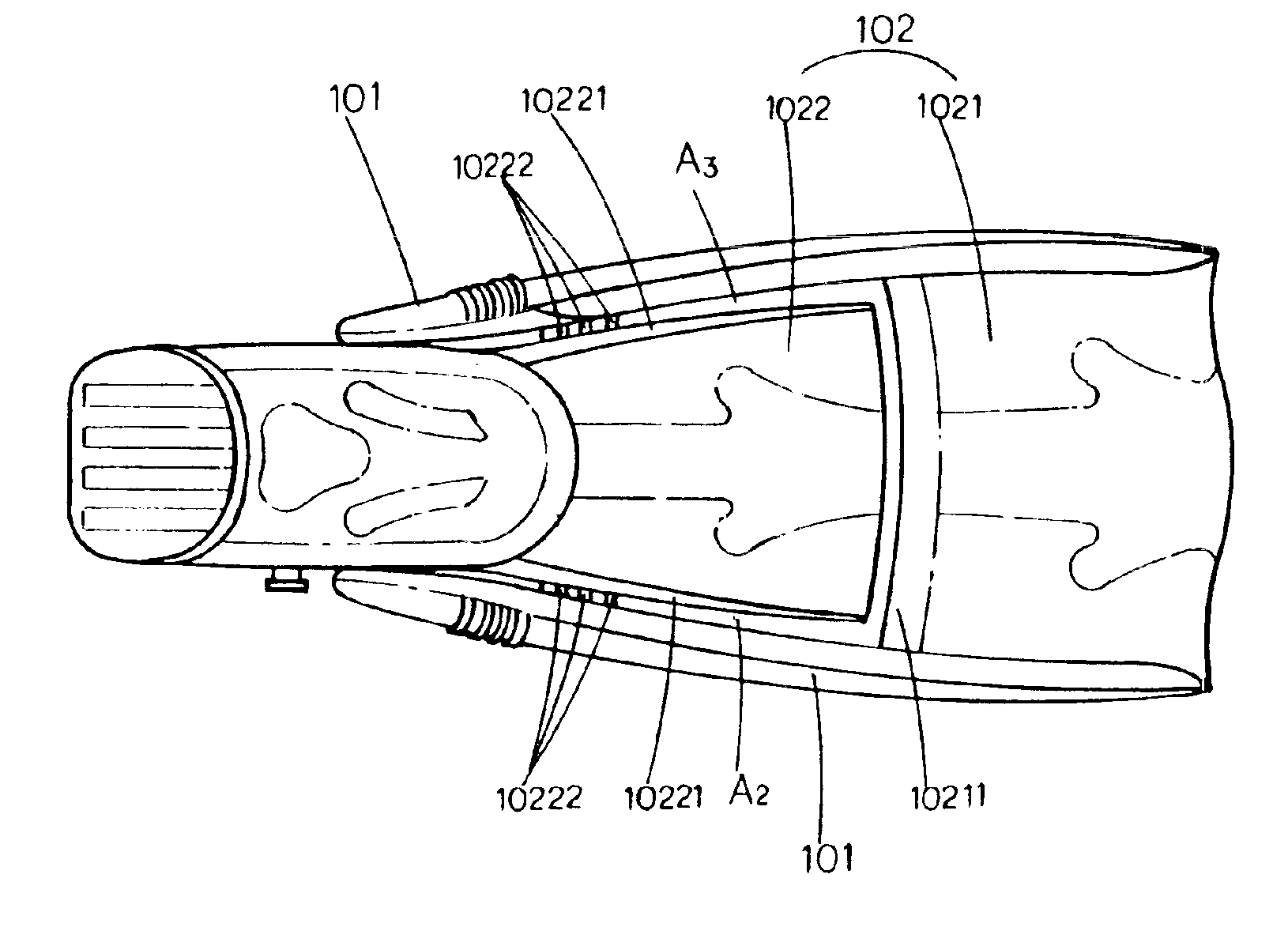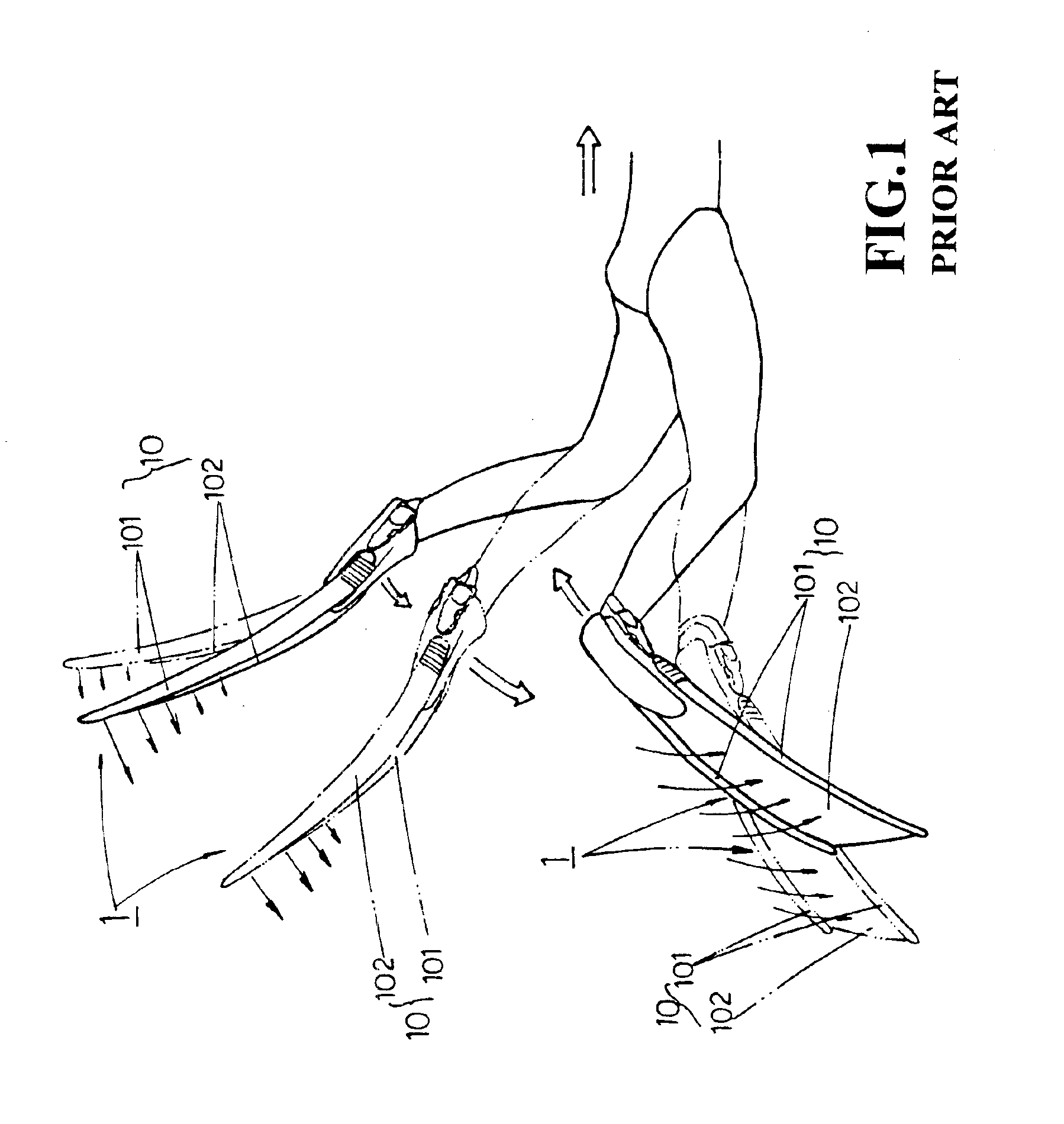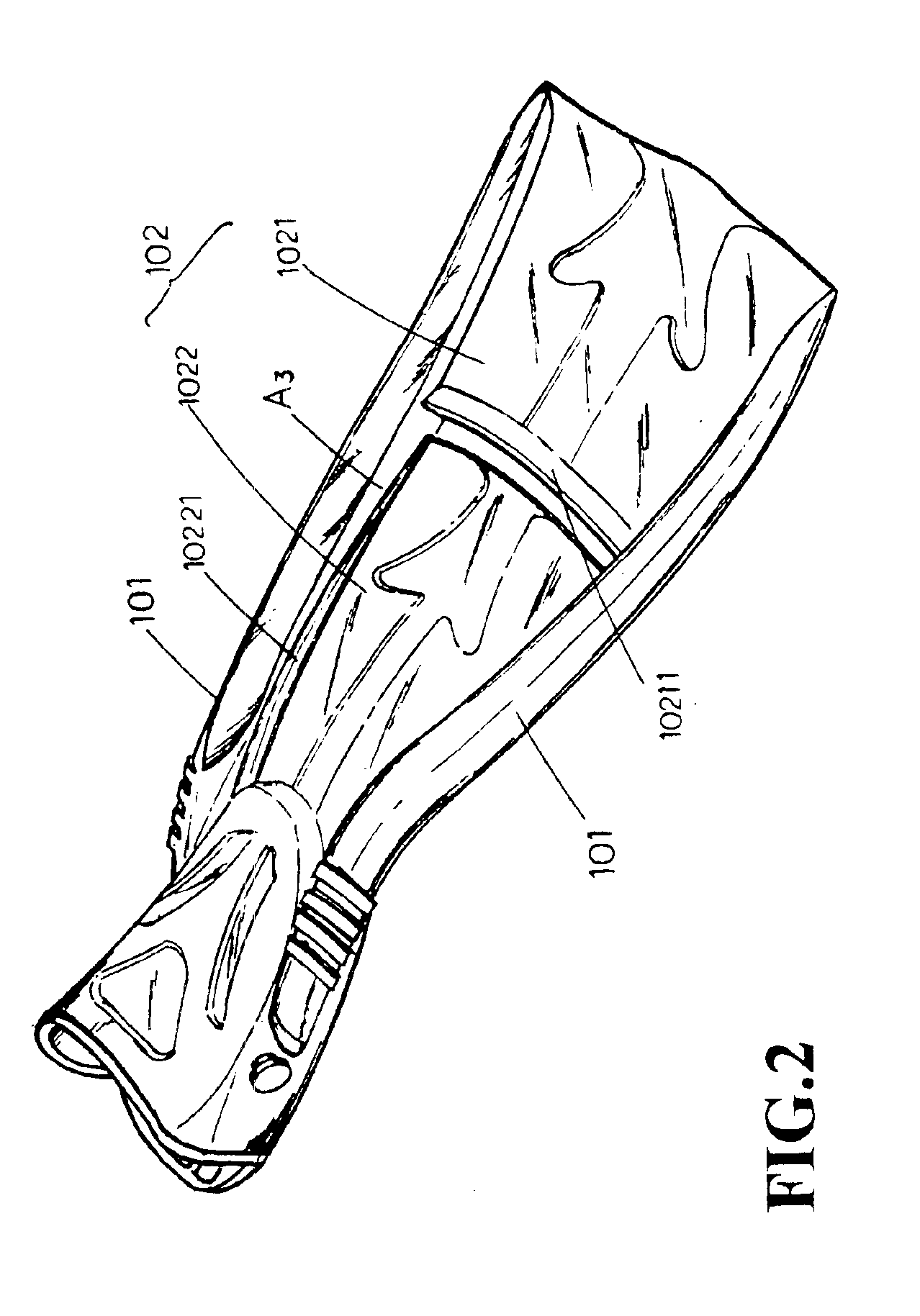Diving fins
a technology of diving fins and fins, which is applied in the field of diving fins, can solve the problems of less than optimal aquatic kicking efficiency, increased stiffness, lack of smoothness, and increased fatigue, and achieves efficient strength conservation, improved flutter kicking efficiency, and improved speed performance.
- Summary
- Abstract
- Description
- Claims
- Application Information
AI Technical Summary
Benefits of technology
Problems solved by technology
Method used
Image
Examples
Embodiment Construction
[0027]Referring to FIGS. 2, 3, and 4, it is obvious that the improved diving fins of the invention comprise a pair of tapered second longitudinal flukes 10221 respectively disposed on each longitudinal side of a second web surface 1022 (please refer to FIGS. 5 and 6); a rear end coupled to first longitudinal fluke 101 on both sides of the second longitudinal fluke 10221 and a longitudinal web section 102 being connected to a plurality of transversal adjusting flukes 10222 (please also refer to FIGS. 5 and 6) in the form of partitions; and a conical transversal fluke 10211 disposed at the rear section of the first web surface 1021 (please also refer to FIGS. 7 and 8) with its front section thinner than its rear section.
[0028]Please refer to FIGS. 9 and 10 for the present invention comprising the foregoing components. When a diver articulates both legs rearward and downward for aquatic kicking by posterior extension, due to the flexing potential of the second web surface 1022, it is a...
PUM
 Login to View More
Login to View More Abstract
Description
Claims
Application Information
 Login to View More
Login to View More - R&D
- Intellectual Property
- Life Sciences
- Materials
- Tech Scout
- Unparalleled Data Quality
- Higher Quality Content
- 60% Fewer Hallucinations
Browse by: Latest US Patents, China's latest patents, Technical Efficacy Thesaurus, Application Domain, Technology Topic, Popular Technical Reports.
© 2025 PatSnap. All rights reserved.Legal|Privacy policy|Modern Slavery Act Transparency Statement|Sitemap|About US| Contact US: help@patsnap.com



